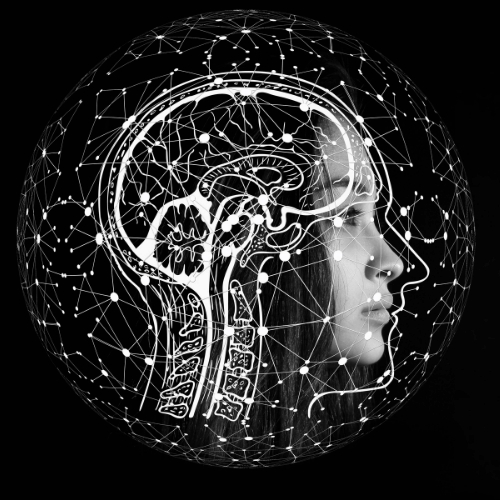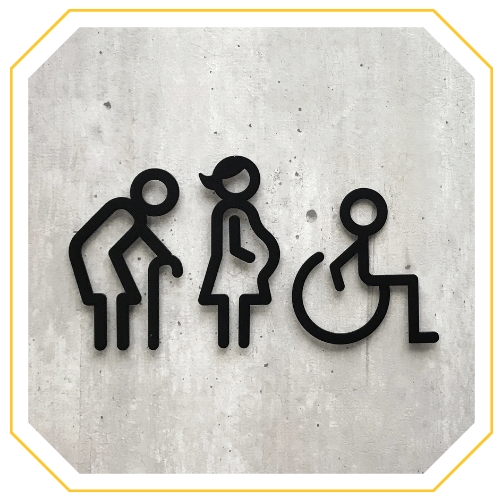Universal Design (UD) is a framework with its foundations in architecture. The foundational idea is that spaces should be designed not for the “average” person, but for those with unique needs. Universal Design posits that design, particularly of public spaces, should factor in every potential scenario.
Universal Design for Learning (UDL) grew out of that concept and involves creating both physical and virtual learning spaces that welcomes every learner’s unique needs, including physical, spiritual, emotional, and cognitive requirements. From this concept, CAST created the UDL framework to help educators develop successful learning experiences for all levels, abilities, and backgrounds. UDL is based on three principles that are designed to empower learners into taking charge of their learning.
The textbook example of how universal design benefits everyone are curb cuts, which are the dips in a sidewalk at an intersection or part of the street. Originally designed for wheelchair users, curb cuts also provide easier access for people pushing strollers or pulling wheeled carts or wagons behind them, even skateboards and roller skates. The addition of walk signs that also make noise provide additional access so that people with limited sight will also know when they are clear to cross.
Accessibility requirements are some of the foundational principles of UDL, but they are not the sole purpose. UDL’s framework has three overarching categories with guidelines that are designed to increase learner Access, Support, and Executive Function.
The three categories all start the same, with the expectation that educators:
“Design multiple means of…”
Click on each of these categories below to expand them and learn more.
The guidelines and principles under Representation are designed to provide students multiple ways of receiving and perceiving the information. Representation is how the information is presented to students. Let’s take a closer look at this concept.
Representation’s guidelines for access, listed as “Design Options for Perception”, for example, would cover many, if not all, of the requirements of accessibility and accommodation under ADA and WCAG guidelines. This guides educators to customize the display of information so that all students can access it – for example, providing both spoken word and written transcripts that would allow sighted people along with those who are seeing impaired, blind, hearing impaired, and deaf access the same information.
Design options for perception also calls for multiple ways of perceiving the information and for making room for different and authentic perspectives and identities – in other words, making room for students of all ages, backgrounds, and abilities.
Here's a fun fact: Hyperlinks (also called links), such as the ones to ADA and WCAG guidelines, provide clarification for vocabulary, language, and concepts – which supports readers in comprehending the overall message. Thus, on this page, we have included Design Options for Languages & Symbols, which addresses how we can support learners such as yourself as you read through this page. You can click on the links to learn more about those concepts.
In your class space online, this might include things like providing pronunciation keys of industry words, links to definitions, and other foundational knowledge resources that you expect students to know. This resists the assumption that everyone has the information they need already to succeed in the course or lesson, and instead, provides the link to that information that students may follow.
Finally, representation also guides us to design options for building knowledge or teaching our students to become better thinkers and learners. This recognizes that students do not come to us as empty vessels, but as fully formed people who have their own experiences, beliefs, cultures, and routines that inform how they receive information. Thus, we want to provide ways to “connect prior knowledge to new learning,” “highlight and explore patterns…and relationships, and “cultivate ways of making meaning.”
Just as Representation offered design options for access, support, and executive function, so does Engagement. Engagement, much like Active Learning, is addressing the student’s unique interests and identities, finds ways to help sustain learning through efforts and persistence, and fostering belonging.
Engagement also contains guidelines that help the student develop and hone their emotional capacity for learning through designing for different expectations and motivations. Good course design according to this principle would provide students choices in how they complete assignments, optimize relevance and nurture student joy and play in learning, as well as provide a class space that offers students appropriate challenges and support.
Some strategies under engagement might include:
Finally, Action & Expression addresses not just how students take in the information but how they demonstrate their learning through interactions and assessments, how they express and communicate their progression, and how they develop agency as lifelong learners and managing their time and resources.
Design options for Interaction provide different modes of navigation through the learning spaces (physical and virtual), as well as ensure there are assistive devices and tools that allow students to complete assignments and receive feedback. For example, you could try set-ups like these:
Design options that Support students emphasize allowing students different modes of expression. In your class, this might look like providing students the opportunity to choose between completing the assignment in a written paper or through a recorded verbal response. To put this into practice, you could provide templates or other options, such as:
Finally, design options that address the Executive Functions of the students focus on providing students the means of setting their goals, organizing the information and resources in ways that make sense to them, as well as enhance their own ability to monitor their own progress.


UDL is built for problem-solving in your classroom because the overall goal of UDL is to make learning flexible and adaptive.
Prefer to chat with an instructional designer? We got you covered!
Set up an appointment with an ID

Universal Design for Learning (UDL) is design for everyone, including our non-traditional students, traditional students, and students with disabilities.